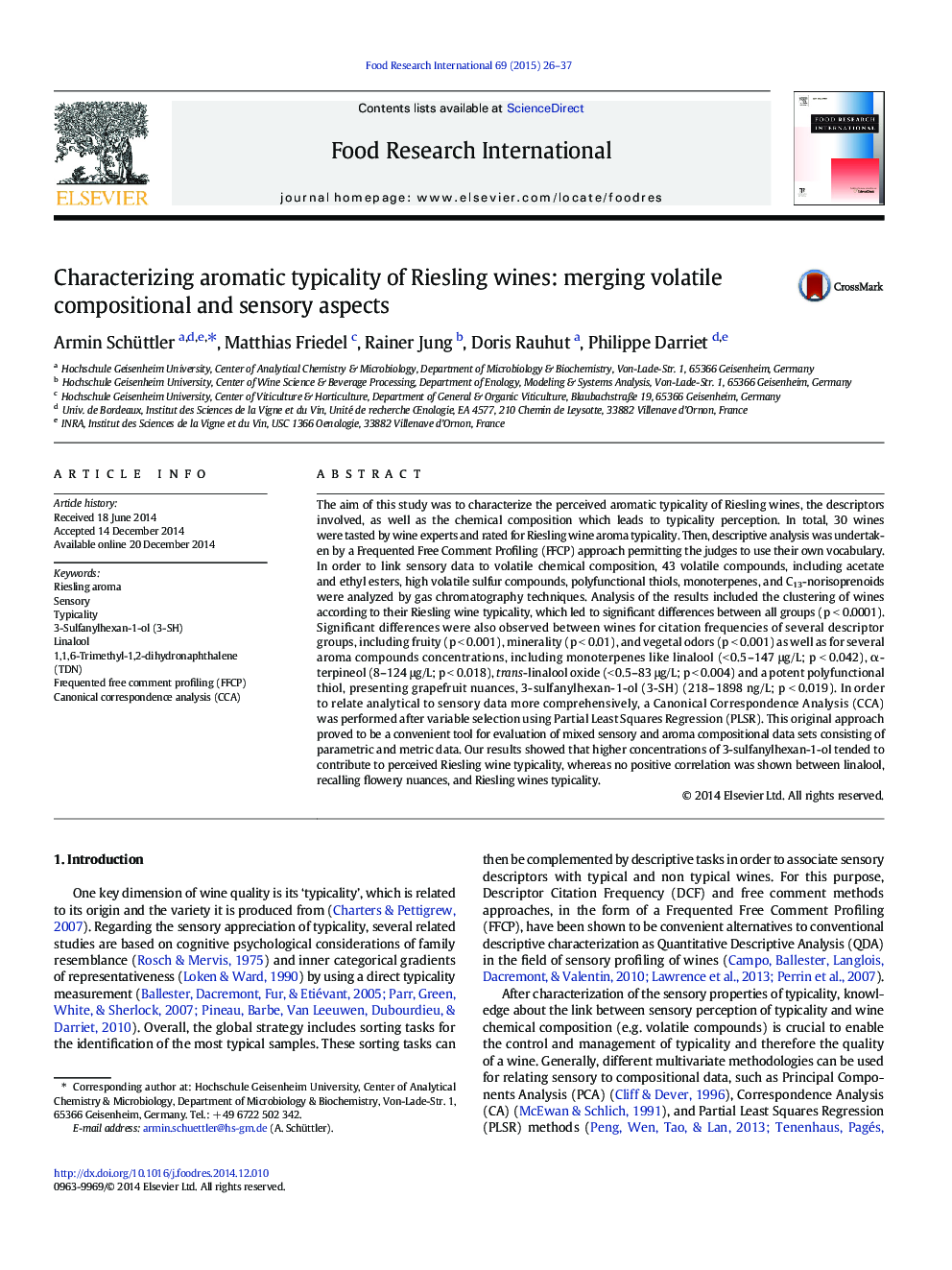| کد مقاله | کد نشریه | سال انتشار | مقاله انگلیسی | نسخه تمام متن |
|---|---|---|---|---|
| 6395541 | 1628477 | 2015 | 12 صفحه PDF | دانلود رایگان |
- Sensory and chemical characterization of typical Riesling wines was performed using free comments method.
- Riesling wines showed entire perceived sensory space against Sauvignon blanc and Chardonnay wines.
- Higher 3-Sulfanylhexan-1-ol concentrations in Riesling wines appreciated as very typical.
- PLS-VIP variables selection and subsequent CCA showed to be an original tool for data analysis.
The aim of this study was to characterize the perceived aromatic typicality of Riesling wines, the descriptors involved, as well as the chemical composition which leads to typicality perception. In total, 30 wines were tasted by wine experts and rated for Riesling wine aroma typicality. Then, descriptive analysis was undertaken by a Frequented Free Comment Profiling (FFCP) approach permitting the judges to use their own vocabulary. In order to link sensory data to volatile chemical composition, 43 volatile compounds, including acetate and ethyl esters, high volatile sulfur compounds, polyfunctional thiols, monoterpenes, and C13-norisoprenoids were analyzed by gas chromatography techniques. Analysis of the results included the clustering of wines according to their Riesling wine typicality, which led to significant differences between all groups (p < 0.0001). Significant differences were also observed between wines for citation frequencies of several descriptor groups, including fruity (p < 0.001), minerality (p < 0.01), and vegetal odors (p < 0.001) as well as for several aroma compounds concentrations, including monoterpenes like linalool (< 0.5-147 μg/L; p < 0.042), α-terpineol (8-124 μg/L; p < 0.018), trans-linalool oxide (< 0.5-83 μg/L; p < 0.004) and a potent polyfunctional thiol, presenting grapefruit nuances, 3-sulfanylhexan-1-ol (3-SH) (218-1898 ng/L; p < 0.019). In order to relate analytical to sensory data more comprehensively, a Canonical Correspondence Analysis (CCA) was performed after variable selection using Partial Least Squares Regression (PLSR). This original approach proved to be a convenient tool for evaluation of mixed sensory and aroma compositional data sets consisting of parametric and metric data. Our results showed that higher concentrations of 3-sulfanylhexan-1-ol tended to contribute to perceived Riesling wine typicality, whereas no positive correlation was shown between linalool, recalling flowery nuances, and Riesling wines typicality.
Journal: Food Research International - Volume 69, March 2015, Pages 26-37
